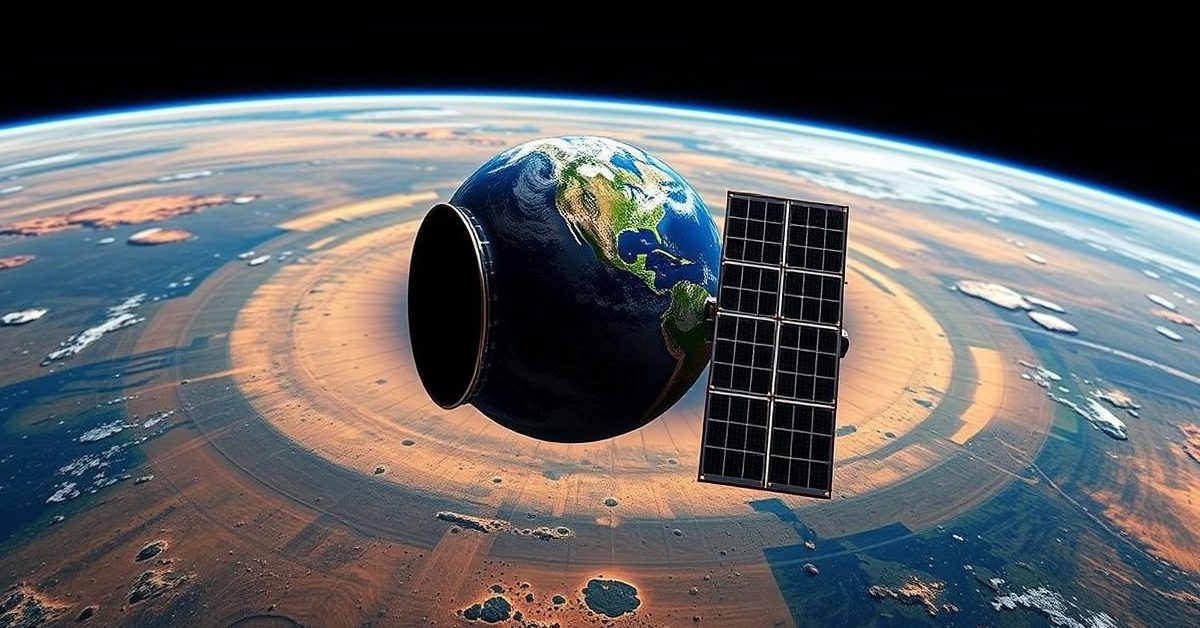The highly anticipated NISAR mission, a collaborative effort between NASA and ISRO, is set for launch, promising unprecedented insights into our planet’s changing environment, alongside future lunar exploration plans.
Understanding NISAR: A Global Eye on Earth
The NASA-ISRO Synthetic Aperture Radar (NISAR) satellite is a groundbreaking Earth observation mission, jointly developed by the US and Indian space agencies. This ambitious project aims to revolutionize our understanding of Earth’s dynamic surface.
NISAR is scheduled to launch from Sriharikota, Andhra Pradesh. This mission is a direct result of a partnership agreement signed between NASA and ISRO back in 2014, showcasing a strong international collaboration in space science.
Key Features and Capabilities
Once in orbit, NISAR will scan the entire globe every 12 days, providing an incredibly detailed series of images of Earth’s surface. Weighing 2,392 kg, it’s designed to be the first satellite ever to observe our planet using two different frequencies: NASA’s L-band and ISRO’s S-band.
These dual radar systems are a unique engineering achievement, as they require distinct hardware yet must function seamlessly together without interference. Each frequency is sensitive to different features, allowing for comprehensive measurements of moisture content, surface roughness, and motion.
This advanced capability means NISAR can provide high-resolution data in all weather conditions, day or night. It’s so powerful it can detect changes as small as one centimeter in size during its repeated observations over the same terrain.
Why NISAR Matters
NISAR won’t predict earthquakes, but it will offer crucial data to study dynamic processes on Earth. This includes tracking the retreat of glaciers, the movement of sea ice, changes in vegetation and forest cover, and even subtle shifts during earthquakes and volcanic activity.
Scientists expect the satellite to provide new insights into critical processes like climate change and natural hazards, helping us better prepare for their impacts. Beyond research, NISAR also has practical applications, such as tracking changes in soil moisture and mapping surface water levels.
At an estimated cost of around USD 1.5 billion, with ISRO contributing approximately Rs 469.4 crores, NISAR stands as one of the most expensive Earth observation satellites ever built.
- NISAR, or NASA-ISRO Synthetic Aperture Radar, is a joint mission resulting from a 2014 partnership.
- It will launch on the GSLV-F16 rocket into a 734 km sun-synchronous orbit.
- The satellite will scan the Earth every 12 days, utilizing both NASA’s L-band and ISRO’s S-band frequencies.
- NISAR is designed to provide high-resolution data, working day and night in all weather conditions, detecting changes as small as one centimeter.
- Its observations will help study glaciers, sea ice, storms, vegetation, and ground movements during earthquakes and volcanoes.
- The mission is expected to enhance our understanding of climate change and natural hazards.
Looking Ahead: The LUPEX Lunar Mission
Beyond Earth observation, India is also collaborating on future lunar missions. Chandrayaan-5, also known as LUPEX (Lunar Polar Exploration), is a joint project between ISRO and the Japan Aerospace Exploration Agency (JAXA).
Proposed for launch around 2027-28 on a Japanese H3 rocket, LUPEX will weigh 6.5 tonnes. Its primary goal is to study water and water-ice on the lunar surface and subsurface, particularly in the Moon’s polar regions.
ISRO is developing the lander for Chandrayaan-5, while JAXA is building the 350-kg rover. The mission will carry seven scientific instruments, with contributions from the European Space Agency (ESA) and NASA, including spectrometers to analyze lunar composition.
This mission follows India’s historic Chandrayaan-3 soft landing on the Moon’s south pole. Future plans also include Chandrayaan-4, a proposed sample return mission to bring lunar soil to Earth for detailed study.















